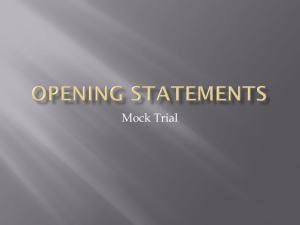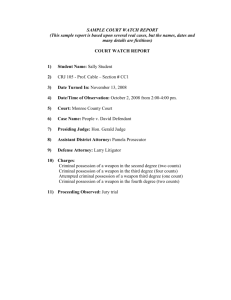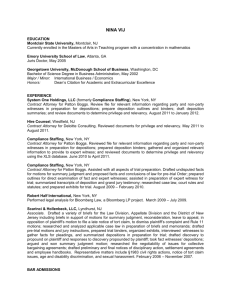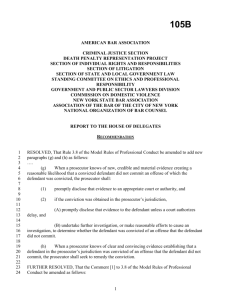Debate I Study Guide for Final Exam
advertisement
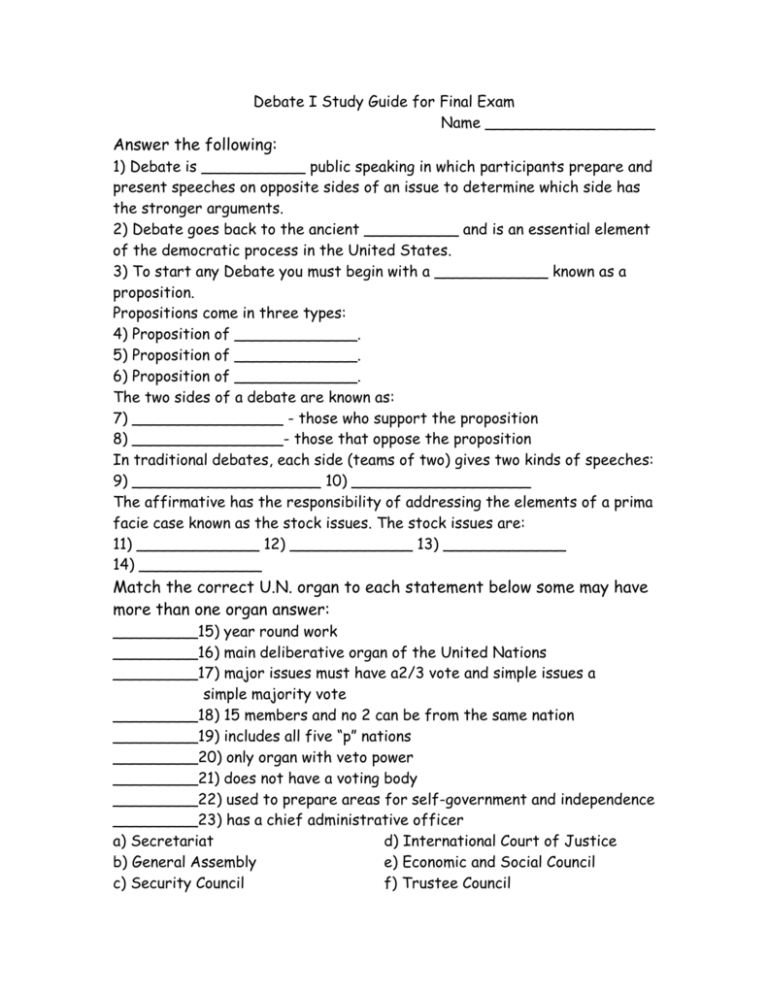
Debate I Study Guide for Final Exam Name __________________ Answer the following: 1) Debate is ___________ public speaking in which participants prepare and present speeches on opposite sides of an issue to determine which side has the stronger arguments. 2) Debate goes back to the ancient __________ and is an essential element of the democratic process in the United States. 3) To start any Debate you must begin with a ____________ known as a proposition. Propositions come in three types: 4) Proposition of _____________. 5) Proposition of _____________. 6) Proposition of _____________. The two sides of a debate are known as: 7) ________________ - those who support the proposition 8) ________________- those that oppose the proposition In traditional debates, each side (teams of two) gives two kinds of speeches: 9) ____________________ 10) ___________________ The affirmative has the responsibility of addressing the elements of a prima facie case known as the stock issues. The stock issues are: 11) _____________ 12) _____________ 13) _____________ 14) _____________ Match the correct U.N. organ to each statement below some may have more than one organ answer: _________15) year round work _________16) main deliberative organ of the United Nations _________17) major issues must have a2/3 vote and simple issues a simple majority vote _________18) 15 members and no 2 can be from the same nation _________19) includes all five “p” nations _________20) only organ with veto power _________21) does not have a voting body _________22) used to prepare areas for self-government and independence _________23) has a chief administrative officer a) Secretariat d) International Court of Justice b) General Assembly e) Economic and Social Council c) Security Council f) Trustee Council ORDER STEPS IN A TRIAL Place the following steps (“a” for the first through “n “for the last) in a trial in order next to the numbers to represent which step comes first (1=first) , second(2= second) , and on to the last which is number 14= last thing to happen.. ________ 24. (First) a. closing argument by the plaintiff's attorney or prosecutor ________25. (Second) b. opening argument by the plaintiff's attorney or prosecutor ________26. (Third) c. closing argument by defendant's attorney ________27. d. opening argument by defendant's attorney ________28. e. cross examination of plaintiff's or prosecutor's witnesses ________29. (Sixth) f. direct examination of plaintiff's or prosecutor's witnesses ________30. g. cross examination of defendant's witnesses ________31. h. direct examination of defendant's witnesses ________32. i. opening of the court ________33. (Tenth) j. verdict ________34. k. rebuttal argument by plaintiff's attorney or prosecutor ________35. (Twelfth) l. swearing in of the witnesses ________36. m. deliberations by the jury ________37. (Last) n. judge's final instructions to the jury Fill in the correct answer for each blank in the Basic Speech Writing Format. I. Introduction A. 38) ____________ - phrase to gain audiences attention B. Transition sentence or sentences C. 39) ____________ II. First body paragraph A. Topic sentence of the paragraph B. 40) _____________________________ C. Transition to next paragraph III. Second body paragraph A. Topic sentence of the paragraph B. Sentences explaining the topic C. 41) _____________________________ IV. Third body paragraph A. 42) ____________________________ B. Sentences explaining the topic C. Transition to next paragraph V. Conclusion A. 43) ________________________ B. Transition to final thought of the speech C. 44) _________________- line to lead the audience out of speech Fill in the blanks for the following about mock trails. There are two types of questioning in a mock trial: 45) ________________ to your own team 46) ________________ to the opposing team 47) The first step in questioning your witness is to _______________ them to jury/court so that the jury will understand who is talking and why what they have to say is important to the case. 48) All questioning should follow the system known as __________ - this is when each question has a basis, a reason for being that everyone can understand. To ensure this, each question needs to piggyback off of the last question by either connecting with the last question or the last answer. 49) When questioning a witness on the opposing team, you get to ask closeended questions known as ______________ questions so they get less of a chance to hurt your side. To do this you ask questions that can be answered with yes or no. 50) To get your witness to testify as an _____________, you must ask questions to establish he or she has knowledge, skill, experience, training, or education and awards,

